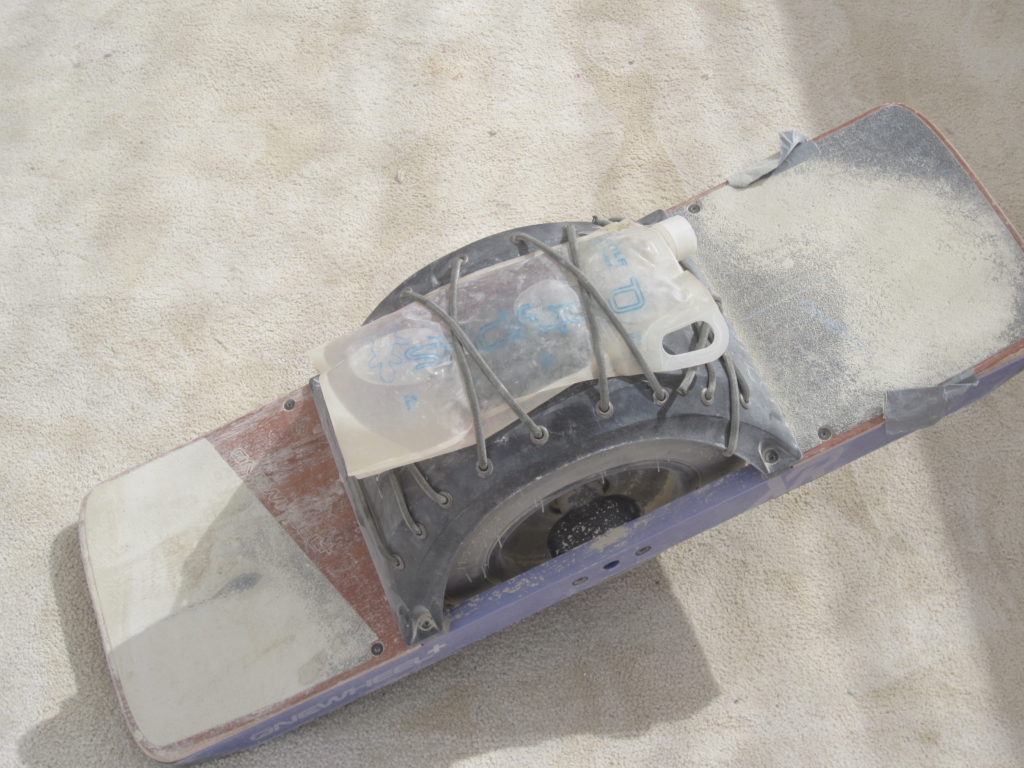Cuckoo Byte Stuffing
I introduce a byte stuffing algorithm for general use that has many useful properties that are not found together in other common algorithms. It obtains very low statistical overhead on arbitrary data without signifigantly increasing the entropy of the data stream. It does this by permuting the escape characters, taking them from a PRNG stream, rather than modifying the raw data. This means that the compressibility and radix locality of the encoded stream is preserved.
Similar to Cuckoo Hashing the algorithm has a pair of escape codes at any time from which values are ejected and a new one is chosen when they are shown to increase the size of the coded stream. By only ejecting a choice for an escape character on conflict, the algorithm is self optimizing, when the symbols of the data stream are not uniformly distributed, cuckoo stuffing achieves greater than the maximum theoretical efficiency for random data. In particular, ASCII and UTF8 data have zero overhead for arbitrarily long streams even when they contain embedded null characters.
- True online operation requiring zero bytes of lookahead, data can be output as soon as it is generated. By adding a single byte of lookahead the average size overhead can be further reduced. Said lookahead can be done opprotunistically based on data availability without changing the decoder.
- The encoded byte stream preserves locality and compressibility, long runs of similar values remain long runs of similar values in encoded form. When possible, the stream remains unchanged aiding debugging by hardware protocol analyzers. This means that the encoded stream may directly be used as a radix tree key with the same efficiency as the unencoded stream.
- Worst case 2x overhead but average case 0.2%, On any form of structured data with a non uniform distribution, the overhead asymptotically approaches zero. unlike other probabalistic algorithms the average case is over arbitrary data, not just random data. There are no generic pathological patterns to exploit.
- The encoding/decoding algorithm requires only 7 bytes of RAM and no buffer. An implementation that takes only about 100 words of program memory on an atmega 8 bit mcu is provided. The PRNG is chosen to be particularly fast on both 8 bit and 32/64 bit architectures. Coding is extremely fast as PRNG only needs to be run on the rare collision.
- Sample implementation released under completely free open source BSD style license.
Algorithm
Encoding takes a byte stream with arbitrary binary data and produces a byte stream that never has a byte equal to zero within it. Decoding inverts this process.
The algorithm relys on a PRNG that can generate a random sequence of bytes. At any given point, there are two escape codes active, e1 and e2. e1 is used to replace the zero byte, e2 is used to indicate that a literal e1 or e2 needs to be inserted. When a literal e1 or e2 occurs in the stream, it is replaced by the sequence e2 e1 or e2 e2 respectively and a new escape value is chosen by iterating the PRNG until the next number that is not zero and not equal to the other escape code. A new code is chosen only when a two byte escape code is generated.
The decoding rules are as follows:
e1 -> 0
e2 e1 -> e1 and replace e1 with next code in sequence.
e2 e2 -> e2 and replace e2 with next code in sequence.
e2 x | x not in {e1,e2} -> e2 x
x -> x
The encoding rules are the opposite:
0 -> e1
e1 -> e2 e1 and replace e1 with next code in sequence.
e2 x | x not in {e1,e2,0} -> e2 x
e2 -> e2 e2 and replace e2 with next code in sequence.
x -> x
Specifics
The PRNG chosen is based on an 8 bit xorshift algorithm, It performs very well on the Diehard tests and although specified as an 8 bit algorithm, it admits a particularly fast implementation on 32 or 64 bit architectures where the 4 middle ops can be replaced by a single shift in a full register.
#define INIT_CODE_STATE { .x = 21, .y = 229, .z = 181, .w = 51 }
struct ecode_generator_state { uint8_t x, y, z, w; };
uint8_t
next_ecode(struct ecode_generator_state *s, uint8_t verboten)
{
do {
uint8_t t = s->x ^ (s->x << 3);
s->x = s->y; s->y = s->z; s->z = s->w;
s->w = s->w ^ (s->w >> 5) ^ (t ^ (t >> 2));
} while (!s->w || s->w == verboten);
return s->w;
}
The initial values for E1 and E2 are
#define INIT_E1 0xC1
#define INIT_E2 0xF8
These were chosen to give a good chance of zero overhead on common data streams.
- Neither occurs in ASCII
- Neither will ever appear in valid UTF8 data
- Do not correspond to any common pad values in binary data protocols
Code




